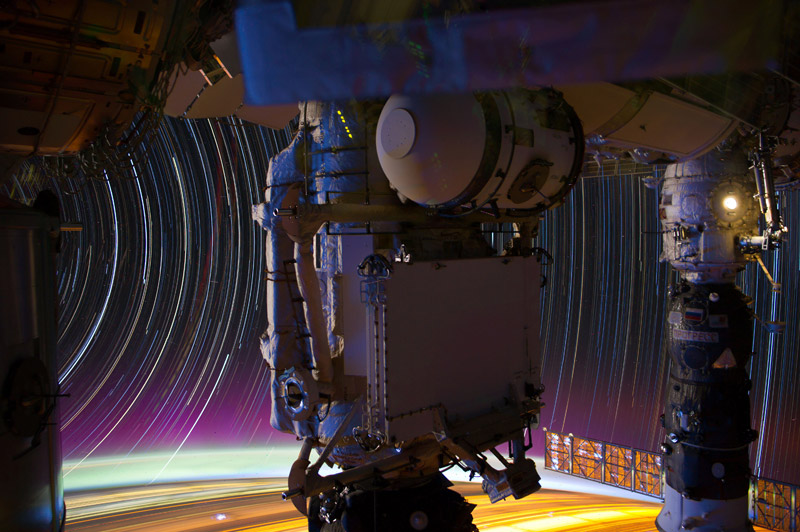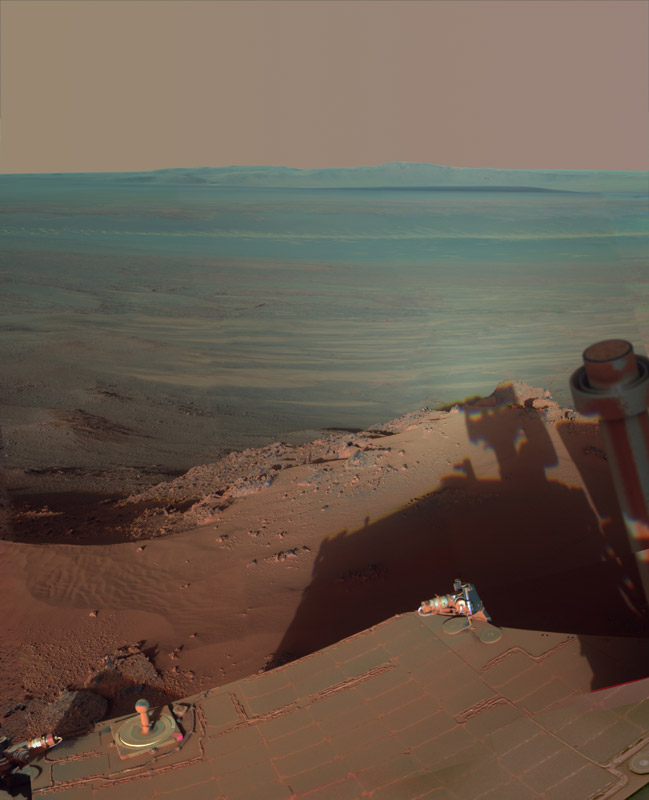
Over the course of a year, sea ice in northern Canada pulsates down into the Hudson Bay and retreats northward in the summer months. In the winter months where the sea ice extends down into the bay, polar bears wander onto the ice in search of food. As summer approaches and the sea ice melts, the bears wander back onto the mainland until the next winter. Photo Credit: NASA/Goddard Space Flight Center Scientific Visualization Studio
May 30, 2012 — Vol. 5, Issue 5
Inadequate funding and access to space threaten the nation’s Earth-observing capability, according to a new report by the National Research Council.

Over the course of a year, sea ice in northern Canada pulsates down into the Hudson Bay and retreats northward in the summer months. In the winter months where the sea ice extends down into the bay, polar bears wander onto the ice in search of food. As summer approaches and the sea ice melts, the bears wander back onto the mainland until the next winter.
Photo Credit: NASA/Goddard Space Flight Center Scientific Visualization Studio
In 2007, the National Research Council (NRC) released its decadal survey outlining a systems approach for space-based and ancillary observations for NASA, National Oceanic and Atmospheric Administration (NOAA), National Environmental Satellite, Data, and Information Service (NESDIS), and others. In late 2010, NASA requested that the NRC conduct a midterm assessment of the Earth Science Division’s (ESD) progress on meeting the strategies, goals, and priorities identified by the NRC, and any actions ESD could take to optimize the science value of the program. Their assessment, released earlier this month, identified key areas hindering NASA’s implementation of the 2007 NRC recommendations.
The assessment reported that while NASA’s response to the 2007 survey was prompt and had made “significant progress” over the past five years, it has taken longer to accomplish than the decadal survey originally proposed. The NRC identified inadequate funding and lack of “reliable, affordable, and predictable” access to space as two main reasons for the pace of NASA’s response to the survey.
With respect to underfunding, the NRC’s recommendations included that NASA’s ESD should look to appropriately scope its mission using a cost-constrained approach, and create a science and engineering advisory team to “assist NASA in coordinating decisions regarding mission technical capabilities, cost, and schedule in the context of the overarching Earth system science and applications objectives.”
Regarding access to space, the NRC recommended that NASA seek to “ensure the availability of a highly reliable, affordable medium-class launch capability.”
Additional findings addressed needs including better cost estimation, improved management of project scope and schedule, and an interagency framework for a sustainable global Earth observing system from the Office to Science and Technology Policy. The NRC applauded NASA’s efforts to work with international partners to meet science goals and operational requirements.
The report concluded that critical national capability and understanding is at stake if the Earth Observing System continues to decline. This includes a reduced ability to forecast weather (which has been improving in recent years), limited ability to assess and respond to natural hazards, inadequate understanding of the changes in Earth’s climate and life support systems for decision-makers, and potential negative impacts on the Earth science and aerospace engineering workforce.









